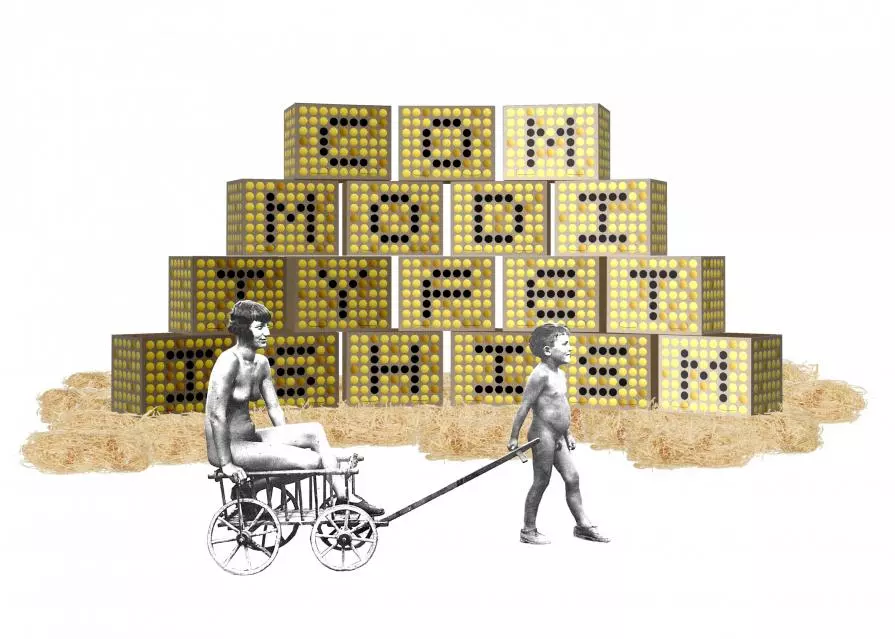Commodity Fetishism
In this context a reflection on this notion of "fetishism" is proposed, particularly in regard to the specific world of art. As a matter of fact it is rare that the public has access to the stage machinery that lies behind the artwork, as it is displayed in the exhibition space. But in fact the artwork participates, in the same way that the rest of commodities, in this phenomenon of "fetishism", what contributes in a significant way, sometimes disproportionately, to the whole ritual.
Starting from this approach, we propose something as simple as to transform the packing of the artwork into the artwork itself, the container into the content, reversing in this way the usual relationship between the two mentioned spheres of production and market. For this purpose we make use of such a common material in our urban environment as cardboard boxes. Similarly, the filler material normally protecting the products during transportation, will be here part of the display, in this case as a support element of the artwork, emphasizing once more this inversion: what used to be inside the box, protecting the product, is now outside, protecting the box itself, which becomes the product.
Furthermore, in consistency with what has been said, the boxes that constitute the artwork –the content–, will work at the same time as the packing –the container–, as no additional packing will be used to transport the work to the exhibition venue. Thus, all marks left in the artwork by the process of production, transportation and assembly, such as identification labels, adhesive tags, dents, bumps, stains, etc. will be a substantial part of the work. Moreover, without significantly affecting the materiality of the cardboard, the idea of commodity fetishism will be expressed through, on the one hand, an array of gold leaf circles, and on the other, a series of holes in the boxes, so that "C O M M O D I T Y F E T I S H I S M" can be read on them.
Nevertheless, the work will not be completed yet. The successive transport, assembly and disassembly processes will continue to "produce" the work, until one day when it will finally die in some quiet permanent exhibition venue.
 Share / Save
Share / Save









Comments 0
Say something